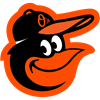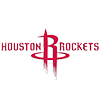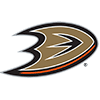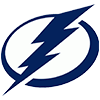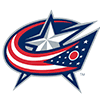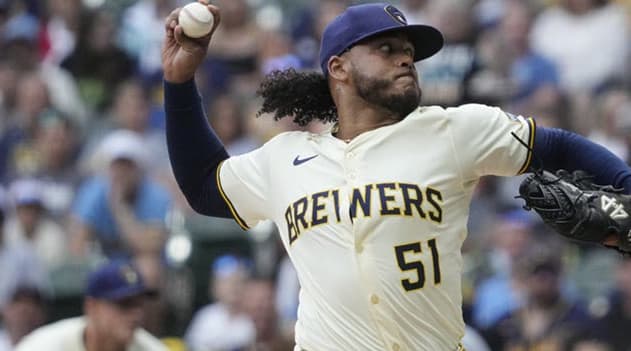MLB news remains understandably sparse, though it might not be too long before we have important things to discuss. Per ESPN's Jeff Passan, a formal proposal from the league to the union for a plan to resume spring training and eventually the regular season is expected to be on the table before long. What exactly that proposal will look like is not yet clear, but it's quite possible that we'll have concrete details to analyze within the next week. A June 10 spring training start and a July 1 Opening Day have been rumored, though whether that's the leading proposal or merely one of many ideas being tossed around by decision-makers is unknown.
Even without specific details, we can speculate somewhat usefully about the general contours of the upcoming season, which seems increasingly likely to take place in some form with each coming week, at least according to reports. For one, owners proposed an 82-game season, but even if that increases, playing more than 100 games appears quite slim with seemingly no hope of the season beginning before July 1. It seemed likely when play was originally suspended that pitchers with workload questions would see their values rise, and that seems even more true now.
We can also speculate on how exactly the game will look once play resumes, as it's obvious that the season will be unusual in many ways. As Trevor Bauer noted in an interview on ESPN on Sunday morning, a short spring training schedule means
MLB news remains understandably sparse, though it might not be too long before we have important things to discuss. Per ESPN's Jeff Passan, a formal proposal from the league to the union for a plan to resume spring training and eventually the regular season is expected to be on the table before long. What exactly that proposal will look like is not yet clear, but it's quite possible that we'll have concrete details to analyze within the next week. A June 10 spring training start and a July 1 Opening Day have been rumored, though whether that's the leading proposal or merely one of many ideas being tossed around by decision-makers is unknown.
Even without specific details, we can speculate somewhat usefully about the general contours of the upcoming season, which seems increasingly likely to take place in some form with each coming week, at least according to reports. For one, owners proposed an 82-game season, but even if that increases, playing more than 100 games appears quite slim with seemingly no hope of the season beginning before July 1. It seemed likely when play was originally suspended that pitchers with workload questions would see their values rise, and that seems even more true now.
We can also speculate on how exactly the game will look once play resumes, as it's obvious that the season will be unusual in many ways. As Trevor Bauer noted in an interview on ESPN on Sunday morning, a short spring training schedule means most pitchers will be on significantly reduced pitch counts for their first few regular-season starts, though just how reduced those workloads will be could vary wildly from pitcher to pitcher based on their specific situations and ability to stay in game shape during the lockdown, something that's generally unknowable for fans. (Bauer said himself that he'd be one of the fastest to be ready, so I guess move Bauer up your draft boards if you trust Bauer as an objective source on his own fantasy value.)
The Reds' righty advocated for significantly expanded rosters to make up for that fact, giving teams additional relievers to pitch the innings their starters won't be able to handle. That could increase offense across the board as batters get the chance to face a team's 10th through 12th relievers. Of course, if rosters don't expand, early offense likely will still increase, as pitchers could be forced to pitch more innings than they're ready to.
We're not completely reduced to speculation, however. A pair of professional leagues, the CPBL in Taiwan and the KBO in South Korea, have recently resumed play, offering us a glimpse into what baseball looks like after a preseason interrupted by a pandemic. While neither league was delayed nearly as long as MLB will be, both saw significant delays, with the CPBL holding its Opening Day just shy of a month after it was originally scheduled to do so and the KBO seeing its start delayed by five and a half weeks. Here's a look at how the early action in those leagues compares to the numbers produced in the same leagues over the same time period at the start of their 2019 campaigns:
| LEAGUE | 2020 KBO First Week | 2019 KBO First Week | 2020 CPBL First 2 Weeks | 2019 CPBL First 2 Weeks |
|---|---|---|---|---|
| R/G | 5.43 | 4.80 | 6.06 | 4.58 |
| HR/G | 1.13 | 0.98 | 1.33 | 0.94 |
The KBO and the CPBL aren't the MLB, and these numbers are undoubtedly affected somewhat by small-sample variance and the warmer temperatures that come with a delayed start, but there certainly seems to be something here. Scoring is up 13 percent through the first week in Korea, while it increased by a full 32 percent across the first two weeks in Taiwan. Homers are up in both leagues as well. These upticks in scoring definitely align with the notion that pitchers seeing their spring buildups disrupted will matter more than it will for hitters.
How exactly should we adjust if a similar effect pops up early in the eventual MLB season? That's difficult to say. This isn't like the juiced ball, where the impact seems to be distributed unevenly among different types of hitters. There could be a case to be made for starting one more reliever than you normally would in the first few weeks, lowering your innings total during weeks of high offense and then making up for it later in the year once scoring stabilizes. It could also be wise to avoid shelling out for top pitchers in DFS contests in the first few weeks of the season, since the bust rate for pitchers could be high in the early going. It may also be wise to slightly boost the values of hitters who have guaranteed playing time early in the season but have players coming to claim their jobs later on, as they'll at least be guaranteed jobs during the highest-scoring part of the campaign.
More specifics on the inevitably odd 2020 MLB season should be available soon, but for now, there are lessons to be learned by keeping an eye on how things are going in the KBO and CPBL. If you're not already following the best baseball on the planet right now, either for its own sake or as a vehicle for some fun DFS contests, which we're providing daily cheat sheets for, it's worth keeping half an eye on how things are going for insight on how the eventual MLB season will unfold. This week's set of risers and fallers is a more speculative one, primarily taking a look at pitchers whose early-season values could be different than expected based on what the landscape of the first few weeks of the regular season will probably look like.
RISERS
 Mike Soroka, SP, Braves: Pitch counts in his first few starts shouldn't affect Soroka too much, as he already didn't throw many pitches during his dominant 2019 campaign. He was understandably treated quite carefully in his age-21 season, throwing the sixth-fewest pitches per start (88.2) among qualified starters. He was more efficient than any other qualified starter with those pitches, throwing a league-low 14.6 pitches per inning. That means that if starters across the league are on pitch counts for their first few starts, Soroka should still pitch comparatively deep in games. I have some reservations about the young righty in general — it will take more than 34 career starts for me to buy the idea that he'll regularly be able to outperform his xFIP by over a run — but efficient arms such as his could certainly see a boost early in an abbreviated season.
Mike Soroka, SP, Braves: Pitch counts in his first few starts shouldn't affect Soroka too much, as he already didn't throw many pitches during his dominant 2019 campaign. He was understandably treated quite carefully in his age-21 season, throwing the sixth-fewest pitches per start (88.2) among qualified starters. He was more efficient than any other qualified starter with those pitches, throwing a league-low 14.6 pitches per inning. That means that if starters across the league are on pitch counts for their first few starts, Soroka should still pitch comparatively deep in games. I have some reservations about the young righty in general — it will take more than 34 career starts for me to buy the idea that he'll regularly be able to outperform his xFIP by over a run — but efficient arms such as his could certainly see a boost early in an abbreviated season.
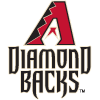 Robbie Ray, SP, Diamondbacks: While pitchers like Soroka could be excellent early values due to the fact that they could still pitch relatively deep in games despite a low pitch count, Ray could have extra value early for the opposite reason. You weren't drafting Ray for his ability to pitch deep into games anyway, so losing the ability to do so shouldn't hurt him all that much. Among pitchers who made at least 30 starts last season, only the relatively uninteresting (for fantasy purposes) Wade Miley and Homer Bailey threw fewer than Ray's 5.28 innings per start. If no pitchers are recording high innings totals, those who produce strong results on a per-inning basis are the ones to target. That certainly describes Ray well, as he ranked third among qualified starters with his 12.13 K/9 last season.
Robbie Ray, SP, Diamondbacks: While pitchers like Soroka could be excellent early values due to the fact that they could still pitch relatively deep in games despite a low pitch count, Ray could have extra value early for the opposite reason. You weren't drafting Ray for his ability to pitch deep into games anyway, so losing the ability to do so shouldn't hurt him all that much. Among pitchers who made at least 30 starts last season, only the relatively uninteresting (for fantasy purposes) Wade Miley and Homer Bailey threw fewer than Ray's 5.28 innings per start. If no pitchers are recording high innings totals, those who produce strong results on a per-inning basis are the ones to target. That certainly describes Ray well, as he ranked third among qualified starters with his 12.13 K/9 last season.
 Tyler Glasnow, SP, Rays: Perhaps the ideal pitcher to target as a strong early value during this strange season would be one who's efficient on a pitches-per-inning basis like Soroka but who was never expected to pitch deep into games like Ray. That description sums up Glasnow quite well. Even throwing out his four brief starts late in the season, when the Rays deliberately kept his workload very low as he built back up from a long injury layoff, Glasnow threw just 86.6 pitches per start, even fewer than Soroka's 88.2 pitches per start. He nearly equaled Soroka's efficiency on a per-inning basis as well, posting 14.9 pitches per inning, which would have ranked third among qualified starters. Glasnow was already being drafted quite high before the season was delayed, despite his significant workload concerns, so he should now jump up a fair bit given that nearly every starter likely will see a reduced workload early in the season.
Tyler Glasnow, SP, Rays: Perhaps the ideal pitcher to target as a strong early value during this strange season would be one who's efficient on a pitches-per-inning basis like Soroka but who was never expected to pitch deep into games like Ray. That description sums up Glasnow quite well. Even throwing out his four brief starts late in the season, when the Rays deliberately kept his workload very low as he built back up from a long injury layoff, Glasnow threw just 86.6 pitches per start, even fewer than Soroka's 88.2 pitches per start. He nearly equaled Soroka's efficiency on a per-inning basis as well, posting 14.9 pitches per inning, which would have ranked third among qualified starters. Glasnow was already being drafted quite high before the season was delayed, despite his significant workload concerns, so he should now jump up a fair bit given that nearly every starter likely will see a reduced workload early in the season.
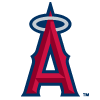 Griffin Canning, SP, Angels: Things looked quite bad for the young right-hander in late February, as he was given the ominous-sounding diagnosis of "chronic changes to the UCL" and appeared to be on the verge of Tommy John surgery. The procedure was ultimately deemed unnecessary, however, and he was cleared to resume throwing at the start of April after a course of injections. His recovery has seemingly gone well, as he's recently been cleared to throw bullpen sessions. The delayed season will give him a strong chance to not wind up missing any time. He's certainly an injury risk, as he dealt with elbow issues late last season in addition to this spring, but no starter this season is going to handle a heavy innings total, so that's less of a factor than it typically would be.
Griffin Canning, SP, Angels: Things looked quite bad for the young right-hander in late February, as he was given the ominous-sounding diagnosis of "chronic changes to the UCL" and appeared to be on the verge of Tommy John surgery. The procedure was ultimately deemed unnecessary, however, and he was cleared to resume throwing at the start of April after a course of injections. His recovery has seemingly gone well, as he's recently been cleared to throw bullpen sessions. The delayed season will give him a strong chance to not wind up missing any time. He's certainly an injury risk, as he dealt with elbow issues late last season in addition to this spring, but no starter this season is going to handle a heavy innings total, so that's less of a factor than it typically would be.
 Bulk Guys, RP, Rays (and others): There is no way this season won't be weird, but the Rays are great at weird. The team that popularized the Opener, and the Bulk Guy should be well-positioned to navigate a strange first few weeks in which potentially very few starters pitch past the fifth inning. Unless the rules changes necessary to allow the season to go forward include an unexpected change to the definition of a win, victories could be quite hard to come by for conventional starters early in the year. Owners looking for an early advantage in that category, especially in head-to-head categories leagues, could be wise to draft a bulk guy or two late in drafts, with the intention of dropping them for a starter once workloads normalize. Unfortunately, the nature of the role means it's difficult to predict exactly who will get the chance for wins out of the bullpen, but Jalen Beeks has a good shot to be that guy for the Rays. He started just three games last season but finished fifth on the team with 104.1 innings pitched, winning six games.
Bulk Guys, RP, Rays (and others): There is no way this season won't be weird, but the Rays are great at weird. The team that popularized the Opener, and the Bulk Guy should be well-positioned to navigate a strange first few weeks in which potentially very few starters pitch past the fifth inning. Unless the rules changes necessary to allow the season to go forward include an unexpected change to the definition of a win, victories could be quite hard to come by for conventional starters early in the year. Owners looking for an early advantage in that category, especially in head-to-head categories leagues, could be wise to draft a bulk guy or two late in drafts, with the intention of dropping them for a starter once workloads normalize. Unfortunately, the nature of the role means it's difficult to predict exactly who will get the chance for wins out of the bullpen, but Jalen Beeks has a good shot to be that guy for the Rays. He started just three games last season but finished fifth on the team with 104.1 innings pitched, winning six games.
FALLERS
 Tanner Roark, SP, Blue Jays: You probably weren't all that interested in Roark already, as he's gone undrafted in exactly one third of NFBC drafts. He's listed here as a stand-in for an archetype of pitcher who would be most hurt if spring training 2.0 isn't long enough for pitchers to fully build up before their first turns in the rotation: the innings-eater who's too inefficient to eat very many innings. Roark ranked a respectable 22nd among qualified starters last season with 96.5 pitches per start, but he was dead last among that group with 18.1 pitches per inning. His 4.35 ERA and 21.9 percent strikeout rate were both respectable enough, but an inability to record quick innings is not a good thing in a hypothetical world of widespread pitch counts. Pitchers like Roark, who aren't anything special on a per-inning basis and who don't throw as many innings as you might think, are unlikely to be the pitchers you want early this season.
Tanner Roark, SP, Blue Jays: You probably weren't all that interested in Roark already, as he's gone undrafted in exactly one third of NFBC drafts. He's listed here as a stand-in for an archetype of pitcher who would be most hurt if spring training 2.0 isn't long enough for pitchers to fully build up before their first turns in the rotation: the innings-eater who's too inefficient to eat very many innings. Roark ranked a respectable 22nd among qualified starters last season with 96.5 pitches per start, but he was dead last among that group with 18.1 pitches per inning. His 4.35 ERA and 21.9 percent strikeout rate were both respectable enough, but an inability to record quick innings is not a good thing in a hypothetical world of widespread pitch counts. Pitchers like Roark, who aren't anything special on a per-inning basis and who don't throw as many innings as you might think, are unlikely to be the pitchers you want early this season.
KBO BAROMETER
There frankly aren't many fallers these days, as it's hard to get injured, fall into a slump or lose playing time while we're all busy self-isolating. I could copy and paste the above paragraph on Roark twice, replacing his name with Wade Miley's and Jon Lester's, pitchers who finished second and third in most pitches per inning among qualified starters last season, but that seems like a waste of your time. Instead, it's time for a special bonus section: a KBO mini-Barometer.
Yes, this is an MLB column. But with the earliest likely date for the resumption of American baseball still more than seven weeks away, I can't recommend the KBO highly enough. It's a great brand of baseball in its own right, and it'll scratch your DFS itch, with the added bonus of a Wild West feel that seems to reward those who put time into learning the league. I hope you'll join me in my quest to learn whether Aaron Altherr really is the next Eric Thames. Below are three names to know from the first week of KBO action.
KBO RISERS
Jose Miguel Fernandez, 1B, Doosan Bears: The Cuban first baseman joined the Dodgers on a minor-league deal in 2017 but never made much of an impact at the big-league level, playing 36 largely unremarkable games for the Angels before heading overseas in 2019. Fernandez has been on fire in his second season for the defending-champion Bears, hitting .591 with a 1.455 OPS through five games. He's very much a contact-first first baseman, much like his countryman Yuli Gurriel (at least the pre-2019 version), hitting a modest 15 homers in 2019, but he still does plenty of damage with his bat. He led the league in hits last season and already has a three-hit lead this season.
Baek Ho Kang, 1B/OF, KT Wiz: The 20-year-old is in many ways the Juan Soto of the KBO, hitting for both average and power while demonstrating excellent strike-zone control while still just a teen. He burst onto the scene with 29 homers and an .881 OPS as an 18-year-old rookie in 2018 and increased his OPS to .915 the following year even as league-wide offense cratered due to a de-juiced ball. He did see his home-run total fall to 13 last season, but he already has two in the first week of 2020 to go with a .300/.364/.700 batting line. He looks like a player with an MLB future ahead of him, if he wants one.
Dan Straily, SP, Lotte Giants: Straily couldn't stick with either the Marlins or the Orioles last season, seemingly a sure sign that his MLB career was coming to an end. Based on his early returns in the KBO, however, there's a chance last season was just a temporary nadir and not the end of the line. Still just 31, Straily has looked quite capable in his first two starts for the undefeated Giants, striking out 15 and walking three in 12.2 innings en route to a 1.42 ERA and a 0.71 WHIP. If he keeps up strong performances throughout the campaign, expect him to field some MLB calls this winter.













